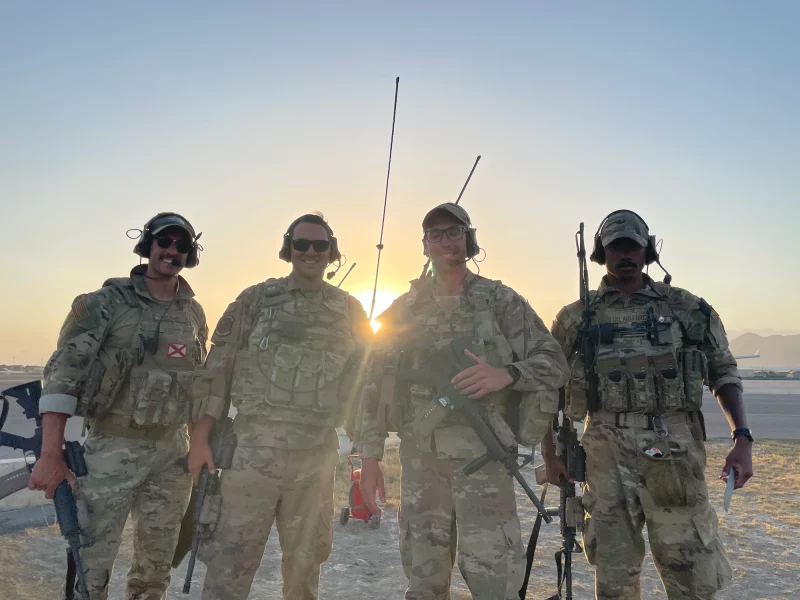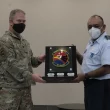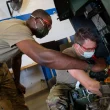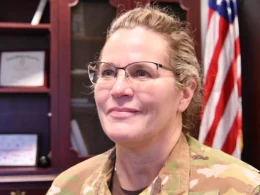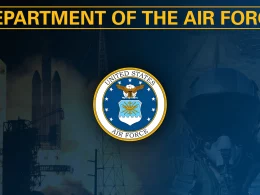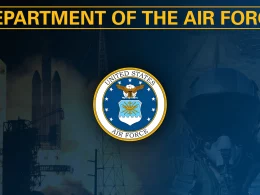JOINT BASE MCGUIRE-DIX-LAKEHURST, N.J. — Night was just falling when the contingency response team stepped off the C-17 Globemaster III into organized chaos.
“There were literally hundreds and hundreds – possibly thousands – of refugees,” said Tech. Sgt. Benjamin Gibson, 621st Contingency Response Squadron air traffic controller, describing his first impression of the flight line. “There wasn’t much of a direction on where to go because everything was hectic.”
Hectic was expected. Hectic was exactly what they were there to assist with. Airmen from the 621st Contingency Response Wing had arrived to ensure the safety and efficiency of the evacuation process of U.S. citizens and allies from Kabul, Afghanistan, a process that would be difficult to manage without the help of Airmen like the air traffic controllers.
Prior to the ATCs arrival, U.S. Marines and Air Force combat controllers had set up a small base of operations, but were not trained to handle ATC functions. To add an extra level of difficulty, the control tower was on the dangerous South side of the Hamid Karzai International Airport.
“They relocated to the North side of the runway and they found a spot next to a concrete barrier,” said Master Sgt. Stacey Cross, 921st Contingency Response Squadron air traffic controller.
What the five ATCs had walked into was an airport with no control tower, hundreds of aircraft coming in to pick up thousands of passengers, and very little equipment to communicate to these aircraft with.
“We didn’t have any satellite phones, we didn’t have any night vison,” said Cross. “We had guns, radios, and I had an international cell phone plan.”
The Airmen moved fast. Within three hours of landing, the ATCs had fully started their operations, splitting off into 12-hour shifts and working with their Marine counterparts.
“We set up airport lighting, we did surface checks to make sure there weren’t any super bad hazards, but the runway was in decent condition,” said Cross.
While the runway was given a physical checkup, other controllers were working on communicating with a constant bombardment of air traffic from all over the world.
“Including every type of aircraft – not just airlift – I would say we controlled 300 operations per day, easy,” said Cross.
Each aircraft needed all their information properly recorded before they could take off with their precious cargo.
“We had our other (ATC) personnel calling each aircraft, having them take down what cargo they had, how many passengers they were taking, the gender of each of the passengers, as well as their nationalities, where they were going, and where they were coming from,” said Gibson. “We were then passing that information on to our operations center who was then passing that information up directly to the POTUS [president of the United States].”
The ATCs passed on hundreds of thousands of names through this method.
“You almost can’t imagine the amount of people we moved,” said Cross.
The high amount of traffic wasn’t the biggest stressor for the ATCs. The deadline was.
“How are we going to get all these people out and then leave ourselves by this Taliban deadline?” said Cross. “It was the unknown.”
The length of time each 621st CRW Airman stayed in Kabul differed based off of when their aircraft arrived. On average, team members were there for 10-20 days before packing up and heading back to their home station at Travis Air Force Base, California, or Joint Base McGuire-Dix-Lakehurst, New Jersey. They took part in the largest movement of passengers in U.S. Air Force history.
For many of the ATCs, their biggest motivator was the reason the team was there.
“We did what we thought was right,” said Gibson. “I like to remember what I’m supposed to be doing – who we’re helping.”




